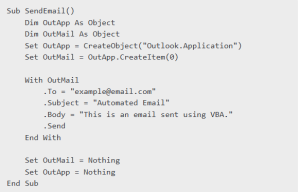For those dealing with large datasets and the like, Excel automation changes the game. Excel automation can save time and improve efficiency not only with Excel macros and VBA programming but even in automating repetitive processes. Workflow productivity can be improved only by learning how to use these tools properly. This comprehensive guide covers Excel automation and it includes an Excel macro tutorial, VBA programming and Excel time-saving tricks.
Understanding Excel Macros
What is an Excel Macro?
Moving a mechanism to an automatic state by just one click or a shortcut is what an Excel macro is all about. By automating repetitive work, the same action is being done without human intervention. Macros are stored in the Visual Basic for Applications(VBA) programming language and can be adjusted in order to meet unique automation requirements.
Benefits of Using Excel Macros
- Time-saving: Macros reduce manual effort by automating repetitive processes.
- Error Reduction: Automation minimizes human errors in data entry and calculations.
- Increased Productivity: Macros streamline workflow, allowing users to focus on more critical tasks.
- Consistency: Ensures uniformity in report generation and data handling.
How to Record a Macro in Excel
- Open Excel and navigate to the Developer tab.
- Click on Record Macro.
- Provide a macro name, assign a shortcut key (optional), and choose where to store the macro.
- Perform the actions you want to automate.
- Click Stop Recording.
- Run the macro using the assigned shortcut or from the Macros list.
Introduction to VBA Programming
What is VBA?
Visual Basic for Applications (VBA) is a powerful programming language integrated into Excel. VBA allows users to create dynamic automation beyond what macros can achieve. With VBA programming, you can interact with Excel objects, perform loops, and handle user inputs.
Why Use VBA in Excel Automation?
- Advanced Customization: Perform complex operations not possible with standard macros.
- Looping and Conditional Statements: Automate repetitive tasks with logic-based programming.
- Integration: Connect Excel with other applications like Outlook and Access.
- Dynamic Data Manipulation: Use VBA to clean, format, and analyze data efficiently.
How to Write a Basic VBA Macro
Step 1: Open the VBA Editor
- Go to Developer Tab > Click Visual Basic.
- In the VBA editor, click Insert > Module.
Step 2: Write Your First VBA Code

Step 3: Run the Macro
- Press F5 or click Run.
- A message box will pop up with “Hello, Excel Automation!”.
Advanced Excel VBA Automation Techniques
1. Automating Data Entry with VBA

If you frequently input the same data, automate it with VBA:
2. Through Rows for Bulk Processing

3. Sending Emails from Excel Using VBA

4. Automating Report Generation

Common VBA Errors and Debugging Techniques
- Syntax Errors: Ensure correct use of VBA syntax and avoid typos.
- Runtime Errors: Use On Error Resume Next to handle errors without stopping execution.
- Logical Errors: Use Debug.Print and MsgBox to track variable values.
Excel Time-Saving Tricks with Macros & VBA
- Auto-format Reports: Use macros to format reports consistently.
- Data Cleaning: Automate removal of duplicates and blank spaces.
- Auto-filter & Sorting: VBA can dynamically filter and sort data.
- Batch Processing: Automate repetitive tasks for multiple files.
- Automated Chart Creation: Use VBA to generate charts dynamically.
Frequently Asked Questions (FAQs)
1. Can I use VBA without knowing programming?
Ans. Yes, beginners can start by recording macros and then modifying them in VBA.
2. How do I enable macros in Excel?
Ans. Go to File > Options > Trust Center > Trust Center Settings > Macro Settings and enable macros.
3. Can I use VBA to automate tasks in other Microsoft Office applications?
Ans. Yes, VBA can integrate with Outlook, Word, Access, and PowerPoint.
4. Is it safe to run macros from unknown sources?
Ans. No, only enable macros from trusted sources to avoid security risks.
5. How do I debug a VBA macro?
Ans. Use breakpoints, MsgBox, and Debug.Print statements to identify issues.




